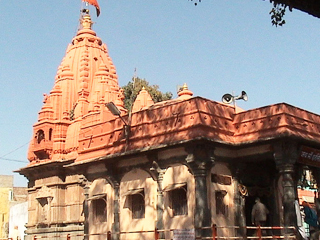History states the past of the state, when it was ruled by the renowned dynasties. It even portrays the journey of the state from the past to the present. The state is said to be the habitat of some of the famous dynasties.
As the modern history says, Madhya Pradesh was the important seat of the Mughal emperors. Books on the modern Madhya Pradesh reveal that Akbar had a strong hold over Madhya Pradesh from 1556 to 1605 AD. Till Aurangzeb's reign, the Mughal dominance over Madhya Pradesh was prominent; but with his demise, his successors failed miserably and the Marathas overtook the Mughals. The Marathas established a semi-autonomous rule between 1720 and 1760 AD.
But the modern Madhya Pradesh bears witness to the influence of the Marathas in this region. With the defeat of the Marathas in the Battle of Panipat in 1761, the Maratha supremacy lost its meaning. Between the 18th and 19th centuries, in Madhya Pradesh, the British crown was expanding its domain in India; and the Anglo-Maratha War proved detrimental in this context. Further, modern Madhya Pradesh also bears reference of the state of Madhya Pradesh post Indian independence. In 1947, the former British Central Province was re-organized. Berar, Makrai and Chhattisgarh were culled from Madhya Pradesh, and were given a separate entity with Nagpur as their capital.
Moreover, in 1956, the states of Madhya Bharat, Vindhya Pradesh and Bhopal were merged into Madhya Pradesh. It was till 2000 that Madhya Pradesh was the largest state in India; but owing to the Madhya Pradesh Reorganization Act, the southern part of Madhya Pradesh was carved out, and the new state of Chhattisgarh came into existence.

Ujjain is the quiet and relatively small provincial town. Ujjain is situated about 60 kms. from Indore. Ujjain is one of the greatest cities of ancient India and one of the seven sacred cities of Hindus in India. It is also one of the four towns where the Kumbh Mela is held and plays as a host up to a million pilgrims who gather on the place every twelve years. Various people came here to bath in the Shipra river and worship at the temples on its banks. According to Hindu astronomers, it is also the city from where the Tropic of Cancer pass. This explains the presence of the observatory (Vedha Shala) built by the Raja Jai Singh of Jaipur in 1725. Even today, the Ephemeris tables (predicted positions of the planets) are published here. Ujjain is also known for industry and crafts. The best season to visit Ujjain is from October to March.